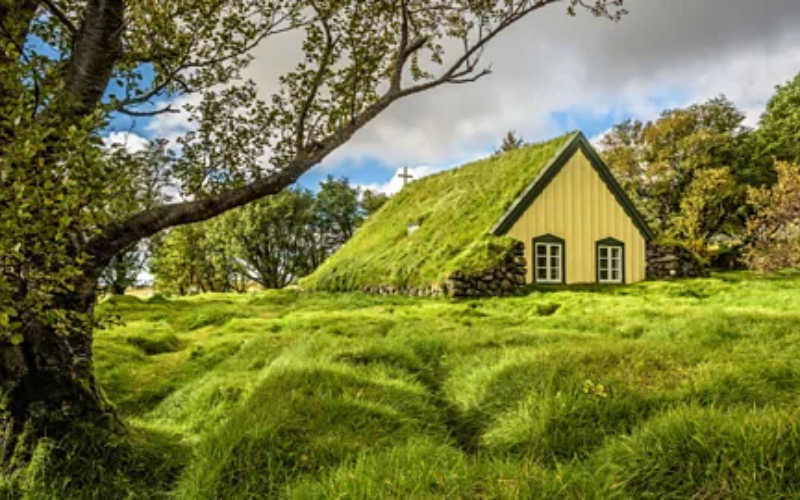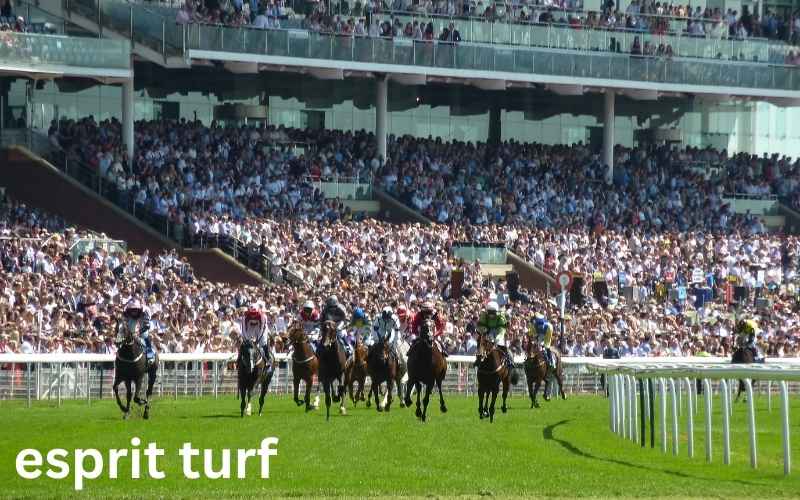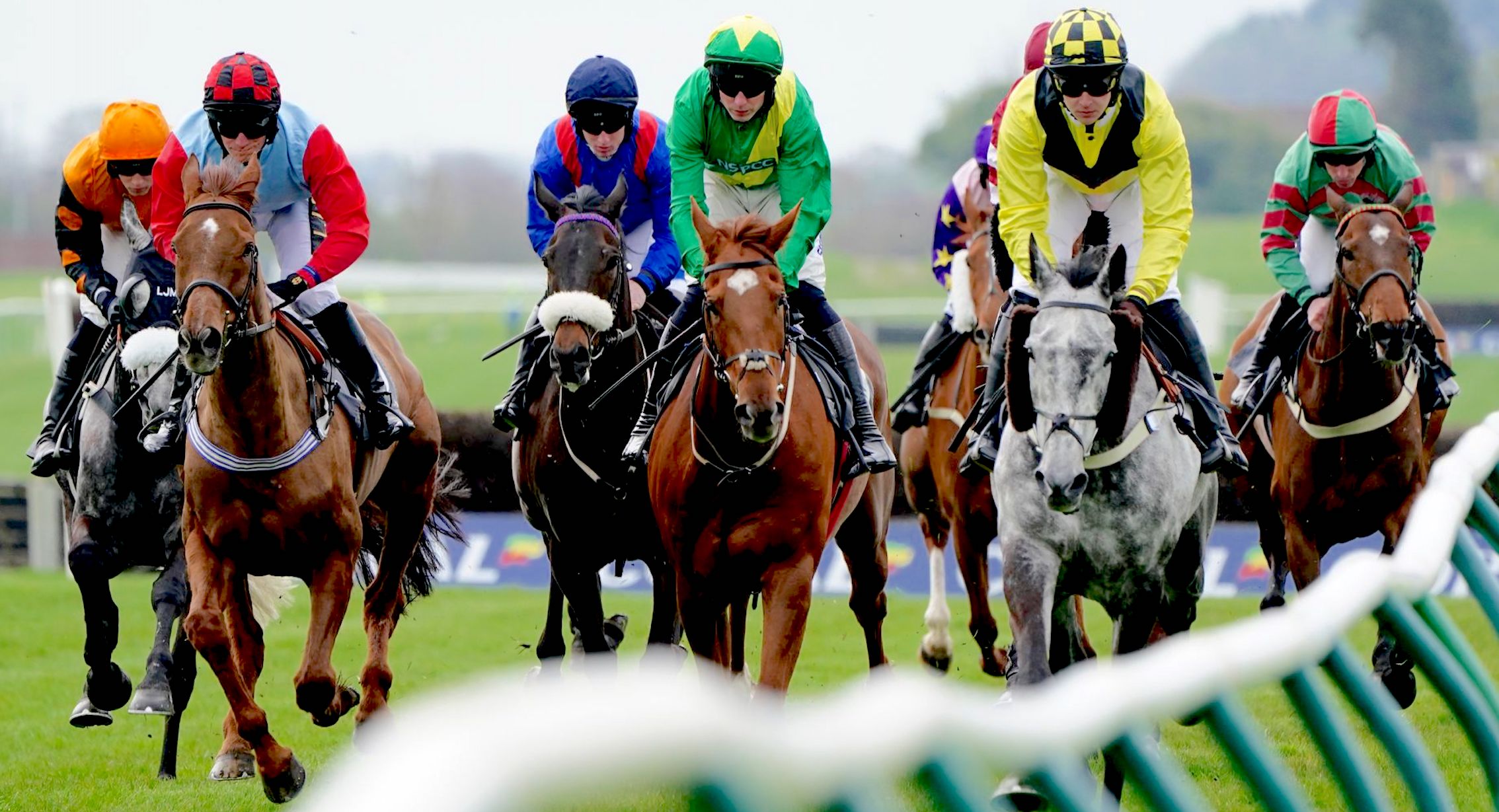When we talk about Turf Original, we refer to the high-quality, natural grass used in both the sports and landscaping sectors. This grass variety has been a staple in equestrian sports like horse racing, where it serves as the ideal surface for the world’s most famous racecourses. Similarly, turf has long been appreciated in landscaping for its aesthetic appeal and durability. Turf Original represents the highest standard of grass used for these purposes, prized for its ability to thrive in various climates while offering performance, beauty, and sustainability. As turf technology advances, it is important to understand its history, uses, and maintenance.
What is Turf Original?
Turf Original refers to a variety of natural grass that is widely used in professional equestrian sports, such as horse racing and polo, as well as for landscaping purposes. It is grown specifically for its durability, aesthetic appeal, and the ability to withstand wear and tear.
The Origins of Turf Original
Turf, as we know it today, evolved from grass species that were naturally resilient to the impact of human activities. Turf Original represents the traditional and highest-quality forms of grass grown for both sporting fields and lawn care. Its history dates back to the early development of racecourses in England, where a durable and aesthetically pleasing surface was essential.
Turf’s Role in Sports
In equestrian sports, particularly horse racing, Turf Original serves as the ideal surface because of its cushioning effect, which reduces injuries to both horses and jockeys. Over the years, racecourses have refined the types of grass used to ensure that they can handle heavy foot traffic while maintaining a smooth, even surface for high-speed races.
Note: Turf Original is preferred in sports due to its smooth texture and durability.
How Is Turf Original Grown?
Growing Turf Original is a precise process that involves selecting the right grass species, soil conditions, and maintenance techniques to produce a premium quality product. The quality of turf used for landscaping or equestrian sports depends largely on the growing environment.
Choosing the Right Grass for Turf Original
Turf Original often includes species like Kentucky Bluegrass, Bermuda, and Ryegrass. Each type of grass is chosen based on the intended use and climate. Kentucky Bluegrass, for example, is commonly used in cooler climates, while Bermuda grass thrives in warmer environments.
Soil and Maintenance Requirements
The soil used to grow Turf Original must be well-drained and fertile to ensure proper root growth. Proper irrigation, aeration, and fertilization are crucial to maintaining healthy turf. Regular mowing and dethatching help maintain the uniformity of the grass, ensuring a smooth, durable surface.
Reminder: Soil conditions and regular care are essential for the quality of Turf Original.
Why is Turf Original Important in Equestrian Sports?
The importance of Turf Original in equestrian sports, especially horse racing, cannot be overstated. The grass provides the perfect balance of cushioning and grip for horses running at high speeds.
Turf’s Role in Horse Racing
In horse racing, Turf Original helps to reduce injuries to horses by providing a surface that absorbs the shock of each stride. It also offers the necessary grip, which is essential for controlling horses at high speeds. The combination of these benefits makes it the preferred surface for many racecourses around the world.
Impact on Horse Performance
Horses running on a high-quality turf surface like Turf Original tend to perform better, as the grass helps minimize the physical strain on their bodies. Turf Original’s uniformity and smoothness ensure that horses can run freely without unexpected bumps or uneven patches that could cause injury.
Note: Proper turf management plays a significant role in ensuring the safety of both horses and jockeys.
How Does Turf Original Compare to Synthetic Turf?
Synthetic turf has gained popularity in some sports, but Turf Original remains the preferred choice for many professionals. Understanding the differences between these two types of turf can help in making informed decisions about their use.
Advantages of Turf Original
Natural Turf Original provides better environmental benefits, such as improved air quality and reduced heat island effects. It also supports biodiversity by fostering beneficial insects and other wildlife. In contrast to synthetic turf, it’s biodegradable and doesn’t pose long-term environmental risks.
Limitations of Turf Original
While Turf Original is ideal for many applications, it requires regular maintenance and care. Unlike synthetic turf, which needs little upkeep, natural grass demands consistent mowing, watering, and fertilizing to stay healthy. Moreover, natural turf may not perform as well in extreme weather conditions.
Reminder: The decision between natural and synthetic turf often depends on the intended use and climate.
Where is Turf Original Used?
Turf Original is used in a variety of settings, with its most notable applications in sports and landscaping. Beyond these, it also plays a role in environmental management and even urban planning.
Turf in Landscaping
Turf Original is widely used in residential and commercial landscaping. It is an aesthetic and functional choice for lawns, parks, and gardens. The lush green appearance and ability to stay cool underfoot make it a popular choice for outdoor spaces.
Turf in Sports Facilities
In addition to horse racing, Turf Original is used in many other sports, including soccer, football, and golf. Its ability to withstand heavy foot traffic and provide a smooth playing surface makes it ideal for professional sports facilities.
Note: Turf Original’s versatility is one of its strongest selling points.
What Are the Environmental Benefits of Turf Original?
While turf is often seen as just a surface for sports or landscaping, it has several environmental benefits that make it a sustainable choice.
Carbon Sequestration
Turf Original is effective in sequestering carbon, helping to offset greenhouse gas emissions. The grass absorbs carbon dioxide from the atmosphere, contributing to a healthier environment. This makes it an eco-friendly option compared to synthetic alternatives, which do not have this benefit.
Cooling Effect and Water Filtration
Turf Original helps cool the surrounding area, making it a valuable asset in urban areas that suffer from the heat island effect. Additionally, it plays a role in water filtration by absorbing rainwater and reducing runoff, which can contribute to water conservation.
Reminder: The environmental advantages of Turf Original make it an appealing choice for sustainable landscaping.
How Is Turf Original Maintained?
Maintaining Turf Original involves a few critical practices that ensure the longevity and quality of the grass. These practices are particularly important for sports fields and high-traffic areas.
Routine Lawn Care
Regular mowing, irrigation, and fertilization are essential for keeping Turf Original healthy. Mowing helps to keep the grass at an even height, while irrigation ensures the turf remains hydrated, especially in dry conditions. Fertilization promotes strong root growth and vibrant grass.
Repairing Damage
Turf Original can suffer from wear and tear, especially in sports fields. Repairing damaged sections involves overseeding, aeration, and applying topdressing to restore uniformity. For racecourses, regular inspections help identify areas in need of repair before they affect the horses’ safety.
Note: Consistent maintenance ensures that the turf remains in optimal condition, extending its usability.
What Are the Future Trends in Turf Original?
As technology and research in turf management continue to evolve, several trends are emerging that promise to enhance the performance and sustainability of Turf Original.
Advanced Turf Breeding
One of the key trends in turf management is the development of improved grass varieties. These new breeds are designed to be more drought-resistant, require less water, and are more resistant to diseases and pests. This makes them better suited to changing climates and growing demands for sustainable landscapes.
Smart Turf Maintenance Technologies
The use of smart technologies, such as automated irrigation systems and turf monitoring tools, is becoming more widespread. These technologies allow for precise management of water and nutrients, reducing waste and improving the health of the turf.
Reminder: Staying updated with turf management technologies can lead to more sustainable and efficient practices.
Conclusion
Turf Original remains one of the most important elements in the fields of equestrian sports and landscaping. Its natural beauty, durability, and versatility make it the preferred choice for a variety of applications. Whether used for horse racing, sports fields, or landscaping, Turf Original continues to be a key player in maintaining high standards in both aesthetics and performance. As environmental sustainability and smart technology take center stage, Turf Original is likely to evolve further, enhancing its value and benefits to users worldwide.
FAQ:
- What is Turf Original?
Turf Original refers to high-quality, natural grass varieties used in sports like horse racing, soccer, and in landscaping applications. It’s prized for its durability and aesthetic appeal. - What types of grass are used in Turf Original?
Turf Original typically includes varieties like Kentucky Bluegrass, Bermuda, and Ryegrass, selected based on climate and intended use. - What is the environmental benefit of Turf Original?
Turf Original helps sequester carbon, cools the surrounding environment, and filters water, making it an eco-friendly choice for urban spaces. - How do I maintain Turf Original?
Turf Original requires regular mowing, irrigation, fertilization, and occasional repair through overseeding and aeration to maintain its health and appearance.
Is Turf Original better than synthetic turf?
Turf Original offers environmental benefits, such as carbon sequestration and cooling effects, but requires more maintenance compared to synthetic turf. The choice depends on the specific needs of the area.



